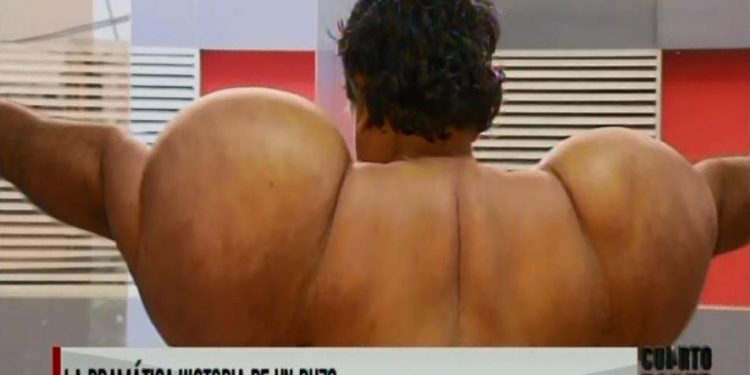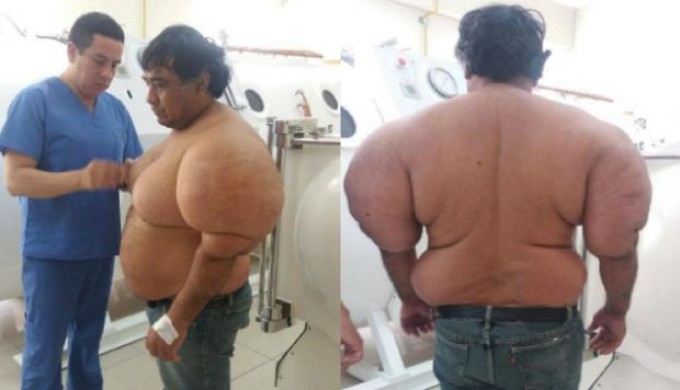Alejandro Ramos Martínez, a seafood diver from Pisco, Peru, recently made international headlines after a terrible accident left him looking like a human balloon.
He apparently rose from a depth of 30 meters too fast, which caused the nitrogen in his blood to form giant bubbles that adhered to his muscles, leaving him looking deformed.
Martínez’s unusual case was featured on Peruvian TV show “Cuarto Poder”, where doctors were left stunned by the horrifying effect of the nitrogen pods on the man’s physical appearance.
Decompression sickness, also known as ‘the bends’, causes nitrogen to come out of solution and form bubbles in the blood and tissues.
In mild cases, symptoms include unusual fatigue, dizziness, nausea and joint pain, but in rare cases it can also cause paralysis or even death. The deforming effects it has had on this Peruvian diver are believed to be unique.

Alejandro Ramos Martínez suffered his diving accident four years ago, but doctors are still looking for ways to get the nitrogen bubbles out of his body.
Because these gas sacks are apparently attached to the man’s flesh, they cannot be removed surgically, so the best solution they’ve come up with so far has been administering oxygen in a pressurized chamber. They have so far been able to eliminate about 30% of the enormous nitrogen bubbles, and estimate Martínez will require at least another 100 sessions in the hyperbaric chamber.
The bizarre reaction to the rapid ascent not only left the seafood diver looking like a walking balloon, but apparently also added an extra 30 kg to his frame. The nitrogen bubbles apparently cause Martínez excruciating pain which he can only live with thanks to painkillers, as well hypertension.

His deformed frame has recently resulted in a serious hip injury which doctors say will require a prosthesis. Peruvian news site Alvaroz reports that if the number of nitrogen bubbles in Alejandro Ramos Martínez can be reduced with the help of oxygen therapy, he will be eligible for a complicated surgical procedure to have them removed completely.
However, the estimated cost of such a surgery is $100,000, which the poor diver does not have. It is unclear how he can even make a living now that he cannot dive anymore.
Latest Stories
-
Ghana is home, Ken Ofori-Atta will return when healthy – Wife
8 minutes -
Balm of Gilead holds “Legacy Fathers’ Awards” to honour servicemen in Kumasi
15 minutes -
‘These are games we enjoy playing’ – Gideon Mensah on All Star Festival 2025
24 minutes -
Hearts of Oak announces recruitment committee
40 minutes -
Nowhere to run: Ghanaians trapped in Israel as war with Iran seals borders
44 minutes -
Bond market: Trading activity declines by 23.15% to GH¢1.18bn
53 minutes -
COPEC calls out government for neglecting key energy assets
54 minutes -
Cedi slides on renewed demand, geopolitical risks; one dollar equals GH¢12.20 at forex bureaux
1 hour -
Detained BECE candidates: Kwabre East MP reports headmaster to police
1 hour -
Ghana’s 2025/26 football season to begin on July 1
2 hours -
Ghana’s neutrality in Iran-Israel conflict commendable – GLOSARGG
2 hours -
Abuakwa South MP engages religious bodies to promote special needs education
2 hours -
Labour Ministry signs MoU with Platinum Impact Ltd. to boost work abroad initiative
2 hours -
Bishop Dr. Emmanuel Victor Adjei Wiredu
2 hours -
Health Top-Up Services transforms public health, safety in Ghana
2 hours

